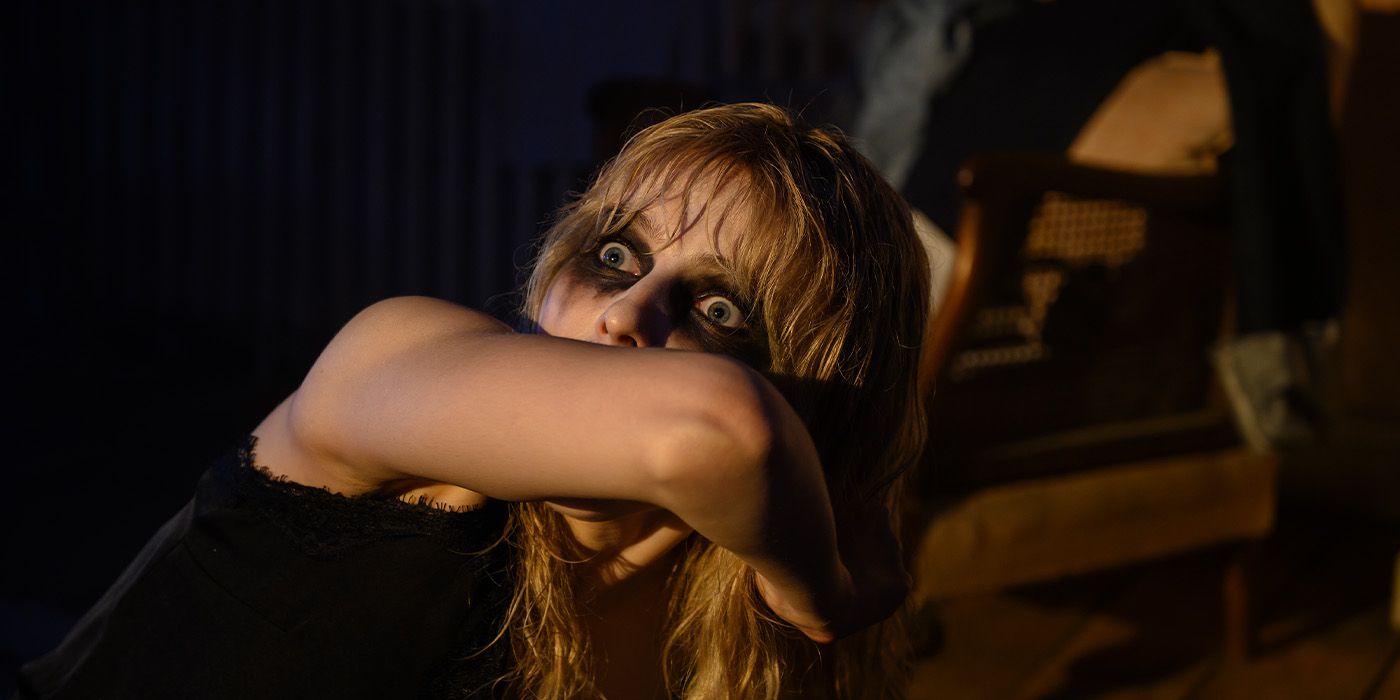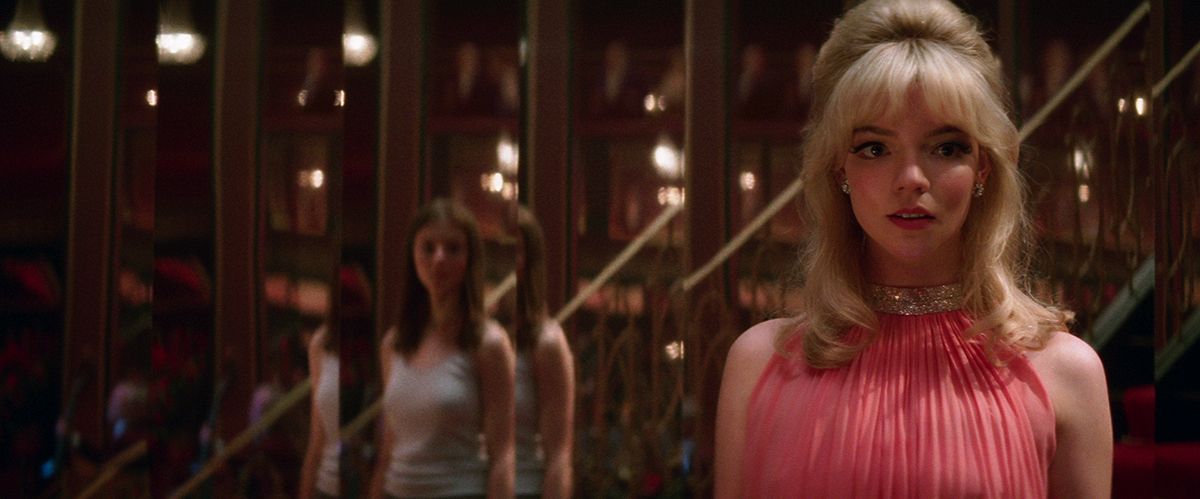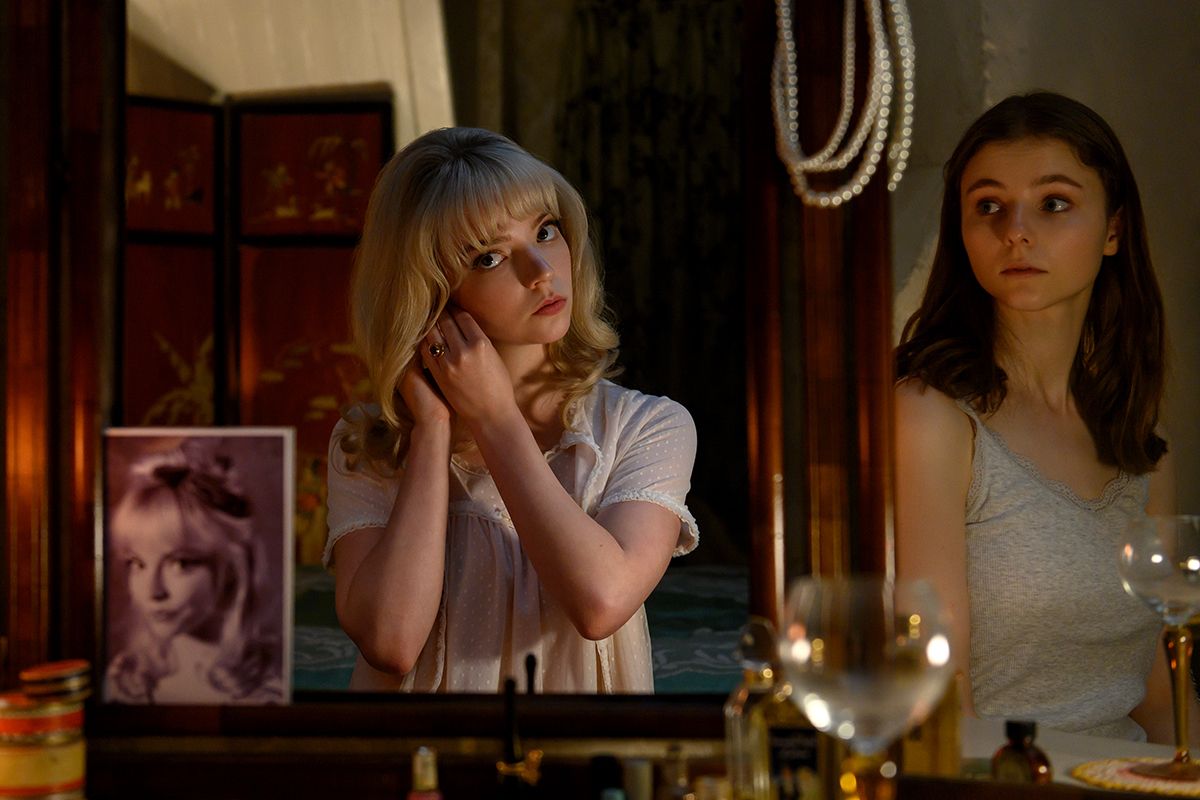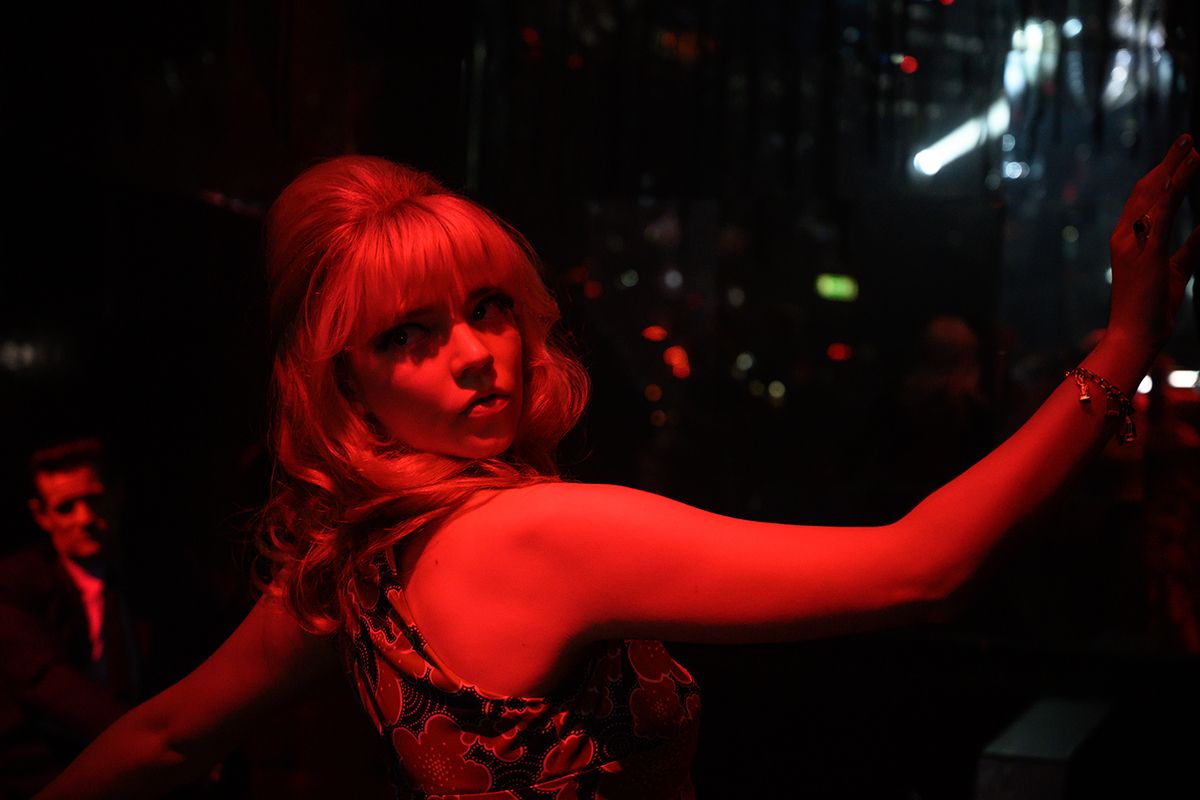Edgar Wright is a director who has a complicated relationship with the past. He’s a filmmaker who wears his influences on his sleeve, but his stories have been circumspect about the dangers of the past and how it can consume the present if you let it. You can see this with the forced idyll of Sandford in Hot Fuzz where its elderly residents force a certain kind of lifestyle on their community, and to a greater extent in The World’s End where past selves have been reanimated as nefarious robots who sand all the rough edges off of humanity. Wright tackles the past in his most direct fashion yet with his latest movie, Last Night in Soho, a blistering, beguiling take on nostalgia that shows how deep the horrors of the past can go. Largely setting aside his trademark humor and rapid editing style, Wright creates his most mature work to date that feels both timely and timeless as it shows the enchantment of the past coupled with its complications we choose to overlook.
Eloise (Thomasin McKenzie) lives in the countryside with her grandmother, but dreams of living it up in London, especially during her favorite era, the 1960s. When Eloise is accepted to fashion school in London, she’s excited for the opportunity, but the harsh reality of city life quickly closes in as she’s quickly made to feel like an outsider by her roommate, classmates, and others. She resolves to find a room she can rent and finds one belonging to the elderly Miss Collins (Diana Rigg). However, when Eloise goes to sleep at night, she awakens to find herself in 1960s London in the body of Sandie (Anya Taylor-Joy), a confident aspiring nightclub singer who feels like she’s got her big break when she meets manager Jack (Matt Smith). However, the more Eloise sees of Sandie’s life, the more she realizes that this is far from the glamorous era she expected and now that dark past won’t let her go.
One of Wright’s talents is that he’s so good at echoing his influences that his films, especially his earlier ones like Shaun of the Dead and Hot Fuzz, were mislabeled as “spoofs” rather than simply channeling genre. Here, Wright is in full command of an entire decade as he transports us back to the 1960s in a way that feels not only of a time and place, but of a certain kind of cinema. It’s a delicate tightrope act to keep one foot in the present and the other in the past as we do when we’re watching Eloise in Sandie’s world, but Wright never loses his balance, due in part to the magnificent cinematography from Chung-hoon Chung and the incredible soundtrack. We’re as intoxicated as Eloise when we’re transported into the past, which makes the encroaching terror even more powerful as Wright turns the film on its head to show the poison of nostalgia.
At first glance, this subtext may feel fairly obvious—the past is never as good as we remember or imagine it to be. However, Last Night in Soho feels more immediate in a cultural climate where the past has already been weaponized to create resentment and fear. When there was an entire political movement claiming to “Make America Great Again”, inherent in that slogan is nostalgia—a time when the past was great. While we’d like to think that’s obviously untrue, it’s clearly a motivation for a sizable amount of the populace. Even removed from the cultural conversation, Wright as an individual is clearly someone who wrestles with how much the past should influence his own work and if there’s some culpability in smoothing and flattening everything out to only take the best bits and leave the rest behind.
What makes Last Night in Soho so encouraging is that Wright refuses to take that path, which I’m sure we’ll leave some viewers unsatisfied, especially in an age where heroes and villains must be clearly delineated and any kind of moral ambiguity is deemed as anathema. Last Night in Soho is a movie that walks you through the beauty of the past, its tragedies, and its horrors, and then asks the audience if they can accept that it’s all woven together, and for some, the answer will be “no”. And that’s a shame because what Wright is doing here is far more than a typical ghost story or simply condemning nostalgia. The film comes dangerously close to falling into an abyss of ambivalence, but Wright manages to pull it back thanks to the emotional core his lead characters bring to the movie.
McKenzie and Taylor-Joy continue to show why they’re two of the most exciting young actors working today. McKenzie is the rare performer who immediately creates a sense of empathy with the viewer. She makes Eloise someone you automatically want to protect, not because she seems helpless or weak, but because McKenzie knows how to balance the character’s excitement with her fears. She’s being thrust into a place that she thought would be one way, and it turns out it’s something darker and more complex, and McKenzie excels at keeping Eloise human while also showing the slow unraveling of her sanity as ghosts from the past encroach on the present.
As for Taylor-Joy, she has an equally heavy task, but from the flipside. She has to enter the film with all the confidence in the world to make the past beguiling for Eloise, and then the film slowly starts to chip away at Sandie. It’s a much sadder story, and while Last Night in Soho is about growing dread and horror for Eloise, for Sandie, Taylor-Joy brings almost a tragic inevitability to the character. She wields Sandie’s growing bitterness, dismay, and fear into a potent mixture where we, like Eloise, are trying to protect someone that’s both immediate and yet a distant past. For both actors, they’re tasked with being both iconic and multi-dimensional, and they make this film their own.
These two actors blending the contemporary with the past help channel the overall feeling of Last Night in Soho where past and present intersect, overlap, and collide. Some may argue that Wright does his job so well in the first two acts that he can’t sustain a third where answers come to light, but I would counter that the film’s conclusion provides a powerful commentary that can only be built on the charm of the 2010s/1960s intersection. By going back to the past, Wright has crafted one of the better horror films of the present.
Rating: A
Last Night in Soho opens in theaters on October 29th.




